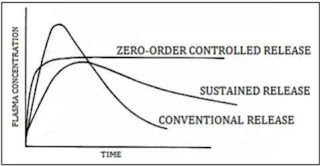What is Law of Mass Action? derive Henderson- Hasselbalch equation?
Law of Mass Action:
For a
reversible reaction at equilibrium, the rate of a chemical reaction at constant
temperature is proportional to the products of the concentrations of each
reacting substance.
derive Henderson- Hasselbalch equation:
According to the bronsted lowry theory of acid and bases, an acid is capable of donating a Proton and a base is capable of accepting a Proton . After the acid has lost its proton, it is said to exist as the conjugated base. similarly a protonated base is said to exist as the conjugated acid.
For example,
HA -----H+ + A-
Now apply the law of mass action,
Ka = [H+] + [A-] / [HA]
or,[H+] = Ka X [HA]/ [A-]
we can write it,
[H+]= Ka X [Acid]/[Salt]
Taking - log of both side of the equation:
-log [H+]=-log Ka -log [Acid]/[Salt]
But,
-log [H+]=pH And, -log Ka =pKa
So, pH = pKa -log [Acid]/[Salt]
or, pH = pKa + log [Salt] /[Acid]
for basic solution, henderson hasselbalch equation will be,
pOH = pKb + log [Salt] /[Base]
This relationship is called the henderson hasselbalch equation.



Comments
Post a Comment
Thanks